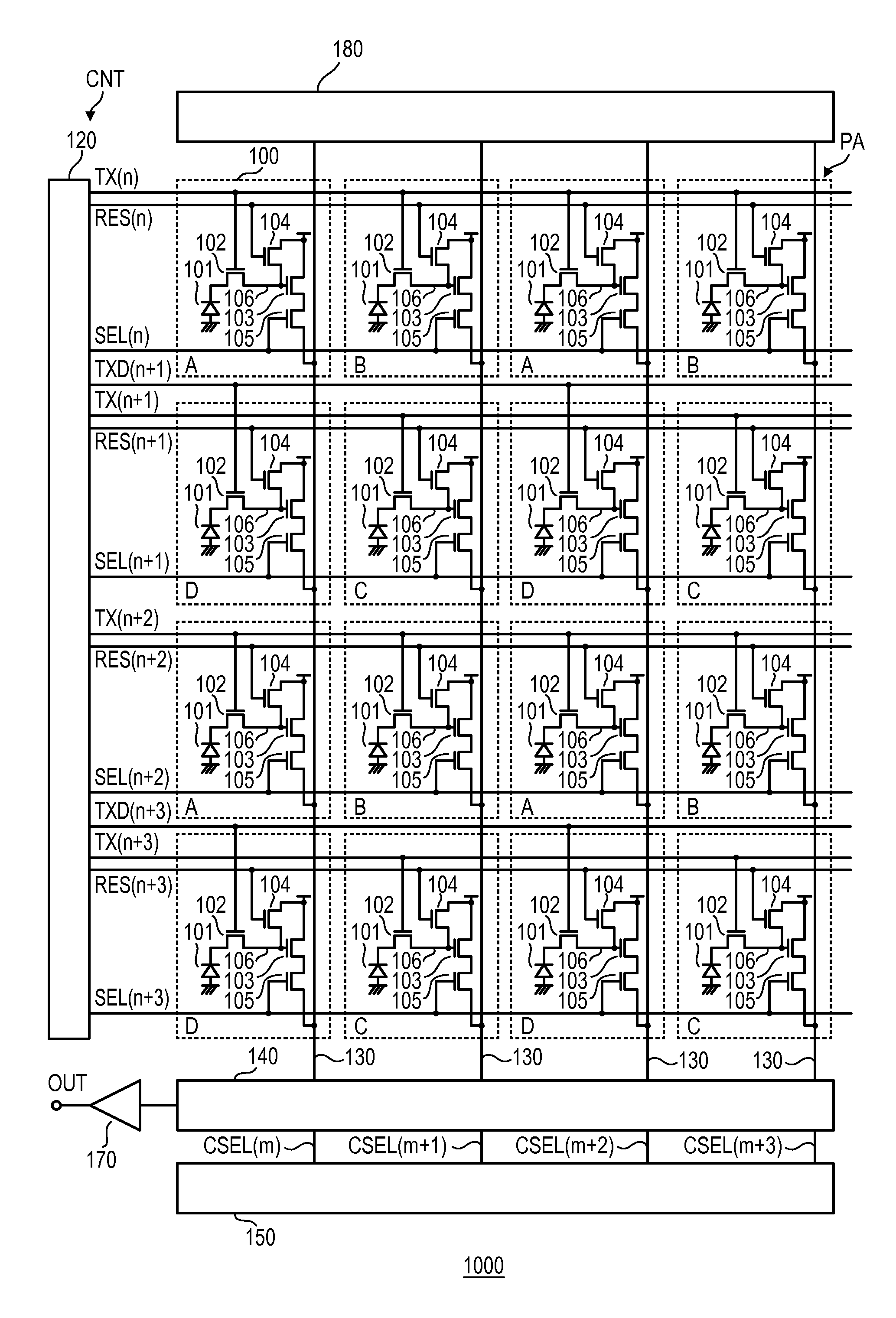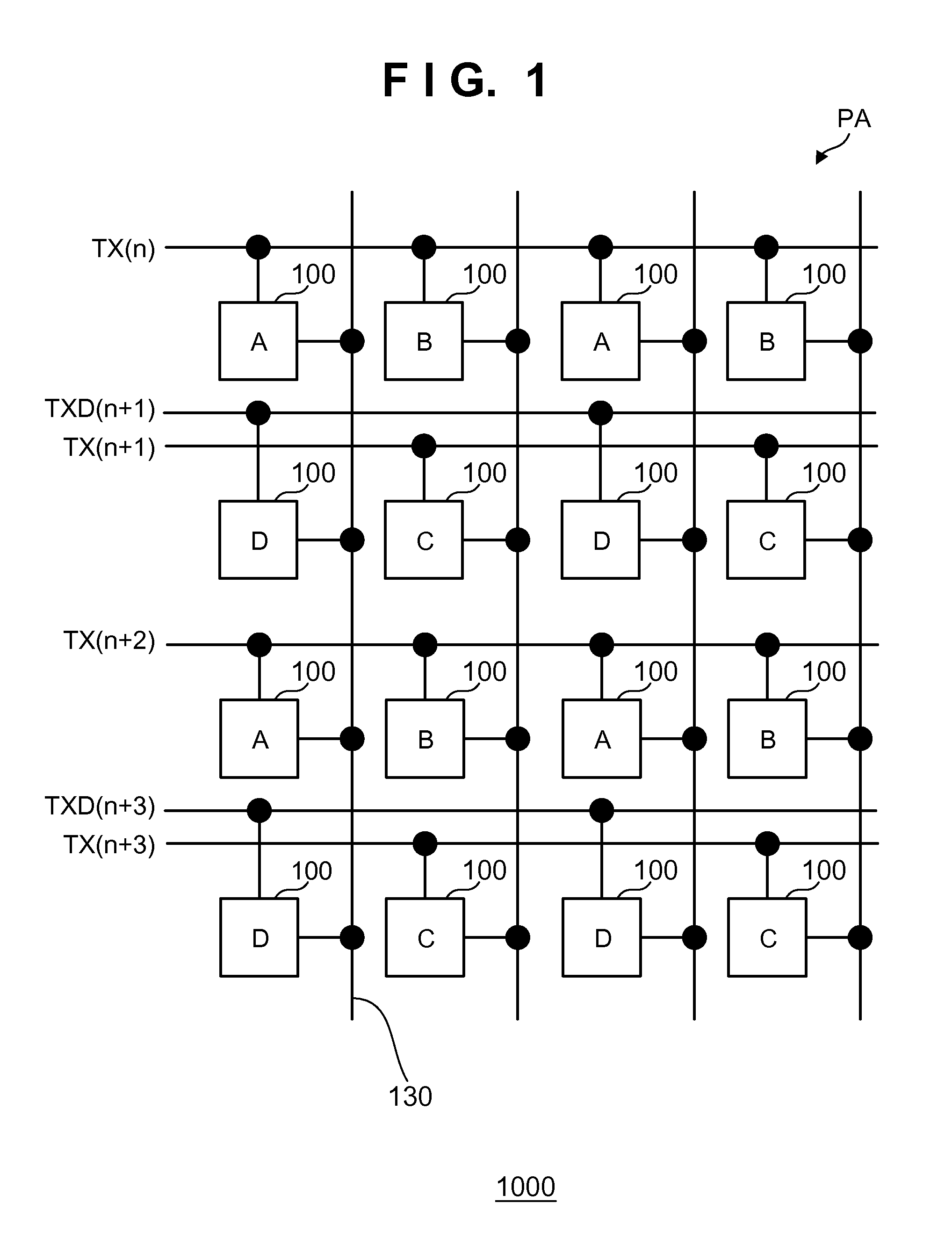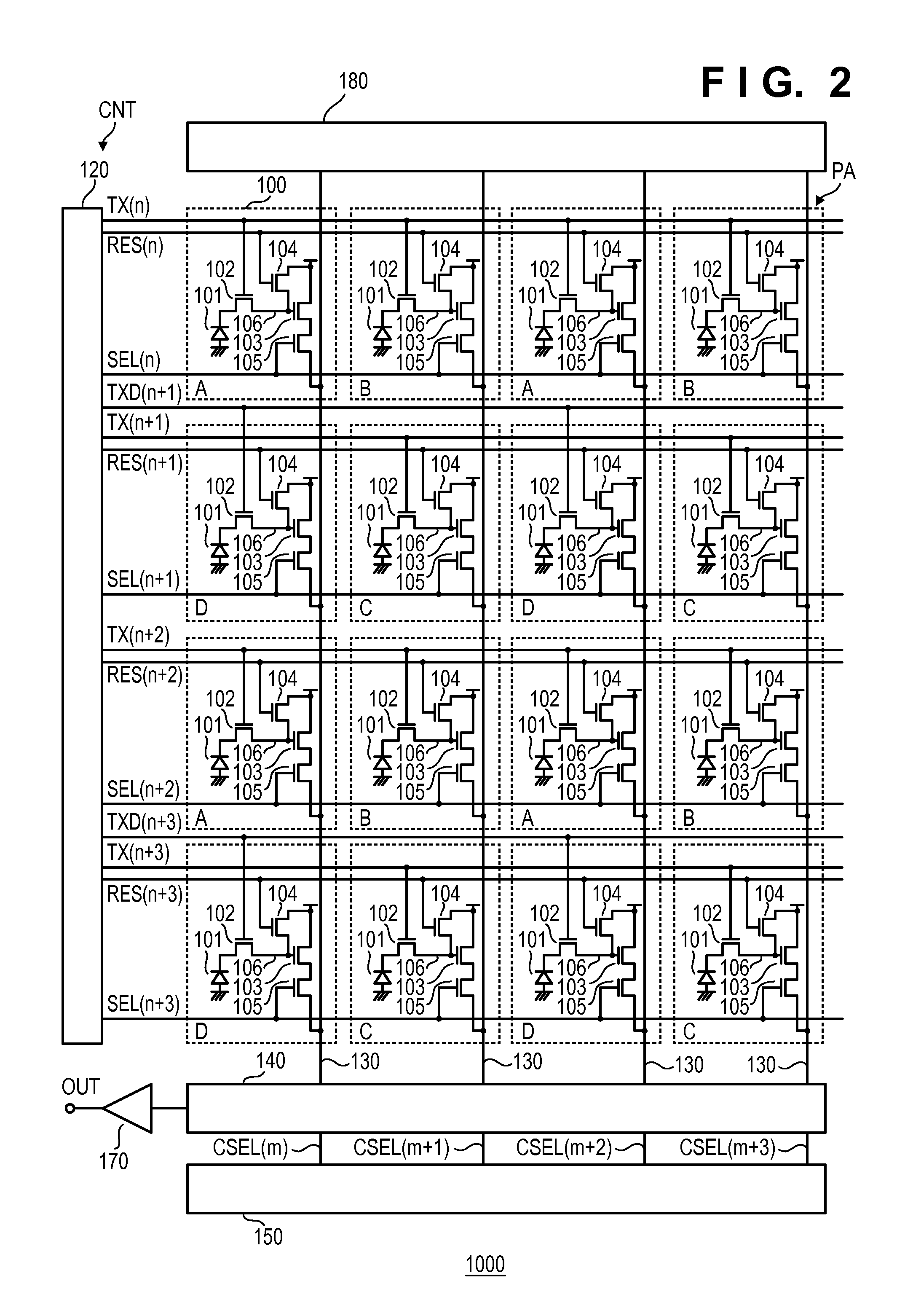Solid-state image sensor and image sensing system
- Summary
- Abstract
- Description
- Claims
- Application Information
AI Technical Summary
Benefits of technology
Problems solved by technology
Method used
Image
Examples
first embodiment
[0022]FIG. 1 shows the arrangement of a pixel array PA of a solid-state image sensor 1000 according to the first embodiment of the present invention. Note that FIG. 1 shows pixels 100 arranged to form a matrix of 4 rows×4 columns for the sake of simplicity. In practice, however, a larger number of pixels 100 are arranged to form a larger number of rows and a larger number of columns. The plurality of pixels 100 of the pixel array PA include A, B, and C pixels as first pixels for detecting light in the first wavelength range, and D pixels as second pixels for detecting light in the second wavelength range including a wavelength range on a longer-wavelength side than the first wavelength range. The A, B, C, and D pixels are respectively indicated by “A”, “B”, “C”, and “D” in FIG. 1 and other drawings. The A, B, and C pixels include color filters which transmit light in different wavelength ranges out of the first wavelength range, respectively. For example, each of the A pixels has th...
second embodiment
[0055]A solid-state image sensor 1000 according to the second embodiment of the present invention will be described with reference to FIGS. 5 and 6. Note that details not mentioned in the second embodiment can conform to the first embodiment. In the second embodiment, the solid-state image sensor 1000 outputs an image formed by the signals of first pixels (A, B, and C pixels) (an image frame in the first wavelength range) in a first period P1 (an “image output (A, B, C)” in FIG. 6). The solid-state image sensor 1000 also outputs an image formed by the signals of the first pixels (A, B, and C pixels) and the signals of second pixels (D pixels) (an image frame in the first and the second wavelength ranges) in a second period P2 which is different from the first period P1 (an “image output (A, B, C, D)” in FIG. 6).
[0056]The solid-state image sensor 1000 according to the second embodiment includes transfer control lines TXD(n+1) and TXD(n+3) used for the second pixels (D pixels) in addi...
third embodiment
[0058]A solid-state image sensor 1000 according to the third embodiment of the present invention will be described with reference to FIGS. 7 and 8. Note that details not mentioned in the third embodiment can conform to the first embodiment. The solid-state image sensor 1000 according to the third embodiment includes transfer control lines TXD(n+1) and TXD(n+3) used for second pixels (D pixels) in addition to transfer control lines TX(n), TX(n+1), TX(n+2), and TX(n+3) used for first pixels (A, B, and C pixels). Also, in the solid-state image sensor 1000 according to the third embodiment, each pixel 100 includes a memory portion M. This arrangement makes it possible to read out an image in the first wavelength range and an image in the second wavelength range having different charge accumulation periods in the same frame.
[0059]As illustrated in FIG. 8, in a charge accumulation period in photoelectric converters 101 of the second pixels (D pixels) (indicated as a “charge accumulation p...
PUM
 Login to View More
Login to View More Abstract
Description
Claims
Application Information
 Login to View More
Login to View More - R&D
- Intellectual Property
- Life Sciences
- Materials
- Tech Scout
- Unparalleled Data Quality
- Higher Quality Content
- 60% Fewer Hallucinations
Browse by: Latest US Patents, China's latest patents, Technical Efficacy Thesaurus, Application Domain, Technology Topic, Popular Technical Reports.
© 2025 PatSnap. All rights reserved.Legal|Privacy policy|Modern Slavery Act Transparency Statement|Sitemap|About US| Contact US: help@patsnap.com



